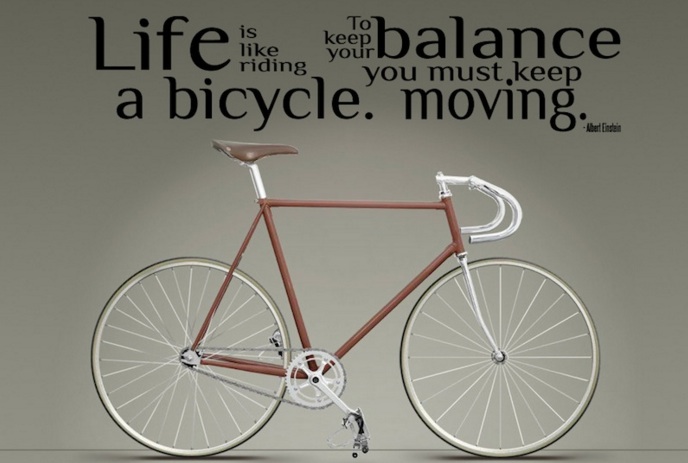There are many people (and even countries) that have claimed the invention of the bicycle, but the reality is that no one person can be credited. It took a combined effort over a couple centuries to bring us from “running machines” to bikes as we know them today.
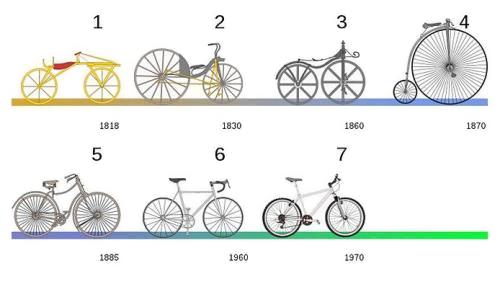
A Brief History of the Bicycle
1817 – Draisienne (Dandy Horse)
To understand how we got to the bicycle design, we have to start at the Draisienne or “running machine.” Made entirely from wood, there were no pedals or gears, but just two wheels and a seat. Using a steerable front wheel, these were used to speed up travel, but disappeared as quickly as they emerged due to a lot of accidents. Extremely heavy and hard to steer, people often lost control around corners on busy pedestrian streets.
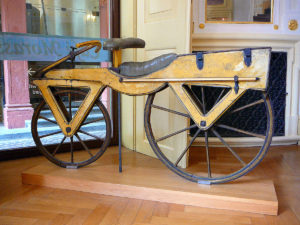
1820s – Tricycles and Quadricycles
Although these were still far from the typical two wheel bicycle design, they introduced the use of pedals, treadles, or hand cranks to propel the vehicle forward. Both tricycles and quadricycles were extremely heavy and had high rolling resistance.
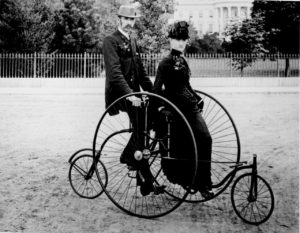
1863 – Velocipede (Boneshaker)
The Velocipede, also known as “the boneshaker,” was invented in France and was somewhat similar in design to the Draisienne. Reverting back to two wheels, the velocipede had pedals on the front wheel, and a brake consisting of a metal lever and a wooden pad that pressed against the rear wheel. With no gears, one rotation of the pedal meant only one rotation of the wheel. True to it’s name, this ‘bike’ was extremely uncomfortable, with the wooden wheel and iron tires on rough cobblestone streets making for a bumpy ride.

1870 – Penny Farthing (High Wheeler)
The Penny Farthing was the first model made entirely from medal and was far more enjoyable to ride with the large front wheel making it more comfortable, easier to navigate, and more efficient. The pedal were still attached to the front wheel, but because it was so much larger, each rotation took you further. The problem was balancing well enough to stay on the high wheeler, and this is where the saying “taking a header” first came about. Even the slightest unexpected bump in the road could cause the rider to lose their balance and go tumbling into the street headfirst.
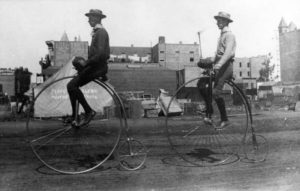
1880 – The Safety Bicycle (Diamond Frame or Rover)
Englishman John Kemp Starkely came out with the first commercially successful Safety Bicycle (called the Rover), but it was not necessarily entirely his design. There were some similar models with the use of the drivetrain, but the Rover was the breaking point for cycling as we know if. With the introduction of metal strong and light enough to make a chain and sprockets, this allowed for smaller wheel sizes and the multiplication of the revolutions of the pedals. This marked a shift in bicyles from a dangerous toy to an efficient means of transportation available to the general public.
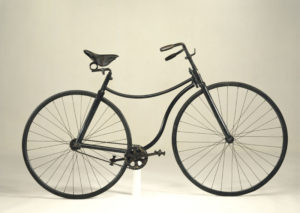
1888 – The Pneumatic Tire
The invention of the Pneumatic (air filled) tire not only made bicycles far more comfortable to ride, but also safer. Scottish Doctor John Boyd Dunlap first had the idea while trying to find a way for cycling to be more comfortable for his sick son.
1890 – The start of the bicycle craze
The coupling of the diamond frame and rubber air filled tires made bicycles affordable and ready for mass production for the first time. In 1897 there were over 2 million bicycles sold in the United States alone, which was about 1 per 30 people. Cycling became not only a means of transportation, but also the vehicle for the growing women’s rights movement, a culture in its own, and an overarching lifestyle.
“Let me tell you what I think of bicycling. I think it has done more to emancipate women than anything else in the world. I stand and rejoice every time I see a woman ride by on a wheel. It gives a woman a feeling of freedom and self reliance.” – Susan B. Anthony

1900s – Today
Although the materials have changed a great deal, with lightweight bicycles made of titanium or carbon fibre, the design has only seen minor adjustment over the past century. Perhaps the greatest of which was the development of the derailleur and gears. Until this point in the 1930s, the rear wheel had a sprocket on either side of the hub and had to be removed and flipped around every time the rider wanted to change gears.
The second half of the 1900s saw the expansion of cycling to mountain bikes, BMX bikes, hybrids, and everything in between. We now have endless options when it comes to choosing a bike, all of which are a whole lot more comfortable and fun to ride than the Boneshaker!
